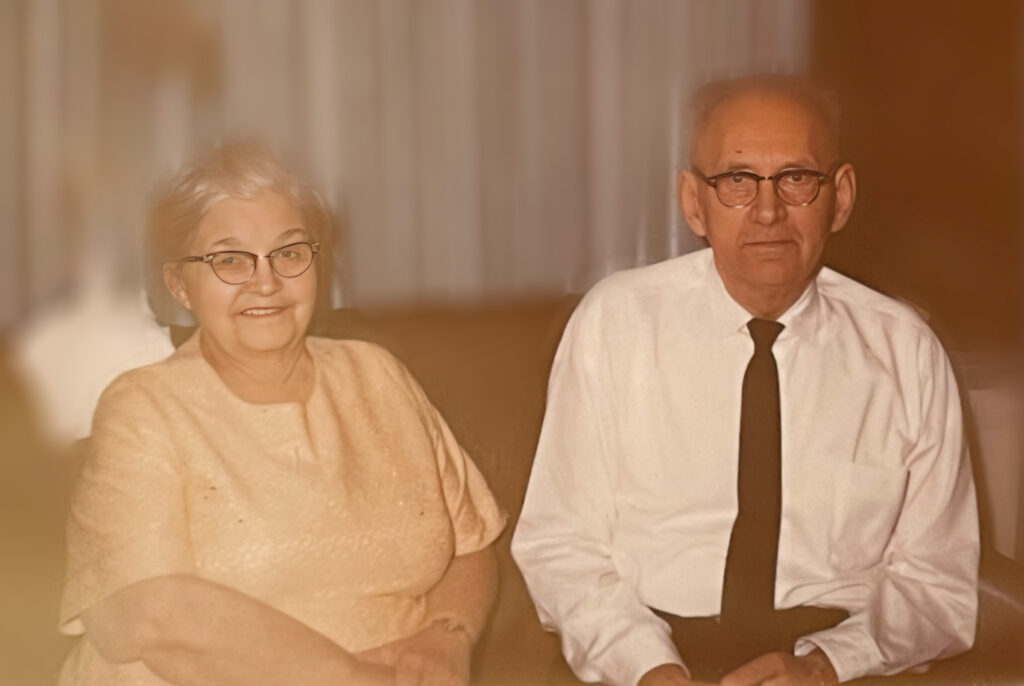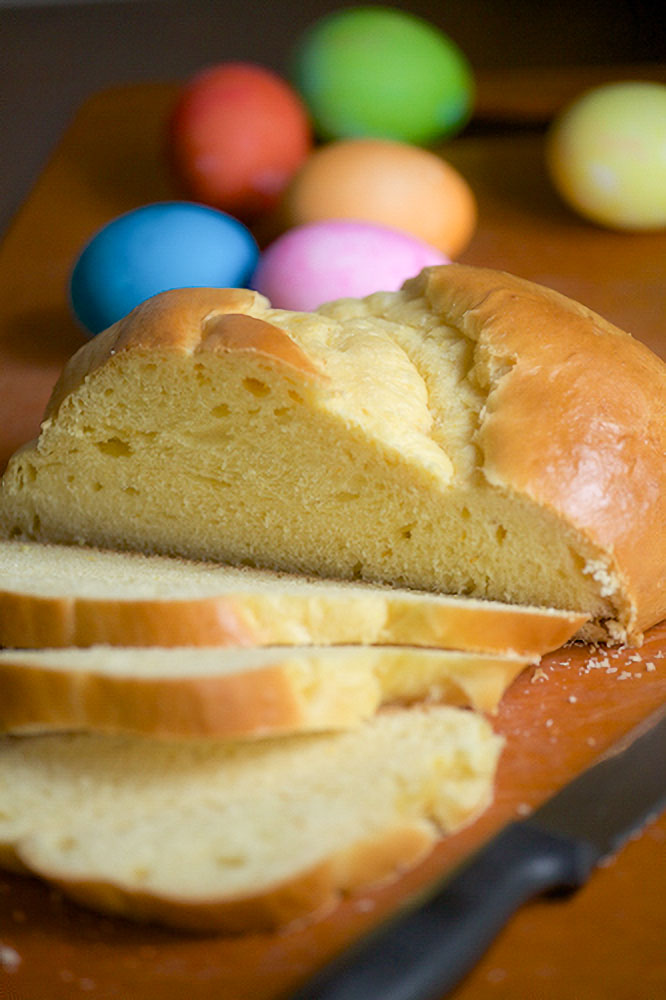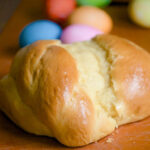Ukrainian Paska Bread for Easter
Inspired by my Grandmother, this is my interpretation of a traditional Ukrainian Easter bread called Paska that she made for my sister and me when we were young. Slightly sweet, tender, and rich; a special once-a-year treat!

I remember, as a young girl, visiting my Mennonite Grandma and Grandpa in their tiny shoebox apartment. Despite the lack of space, their home was always warm and inviting and full of comforting aromas. There was always something good to eat when we visited.

Once, during an Easter visit, Grandma sat my sister and I at the kitchen table and gave us each a slice of fluffy, tender bread. Placing a small dish of what I thought was butter in front of us, she said, “This is the icing you spread on the Paska.” I was amazed – I could put on my own icing? Was this too good to be true? My sis and I both glanced quickly at our Mom, who was scowling at the inappropriate use of sugar. Grandma could not be dissuaded – this was tradition! She believed my sister and I were too skinny anyway, and was probably secretly pleased to be able to put “meat on our bones”. I’ll never forget that first bite – rich, tender, airy and sweet. Truly, a once-a-year treat!

Setting out to make it again seemed a daunting task. Traditional recipes were vague, and made enough for entire church congregations. I was becoming worried I would be forced to abandon my Paska plans. I was about to give up when a recipe was posted on Facebook the very same day I was looking for a recipe to try, by none other than Tina Bacon of The Pink Spatula. That. Very. Day. I like to think Grandma was sending me help when I needed it most.

I made the recipe and guess what? It is exactly as I remember it, sitting at Grandma’s table, eating bread slathered with forbidden icing. This bread is light and fluffy, rich, sweet and tender. The icing is non traditional — a vanilla buttercream, which I prefer. And Grandma would be pleased to know that now I have more than plenty of meat on my bones, thank you very much.
Ukrainian Paska Bread for Easter
Equipment
- stand mixer with whisk and bread hook attachments
Ingredients
Bread
- 3/4 cup unsalted butter melted
- 2 tbsp yeast regular or Quick Rise
- 1/2 cup warm water
- 2 tsp granulated sugar
- 1/2 cup all-purpose flour
- 1 cup milk warmed, use full fat milk
- 10 egg yolks room temperature
- 2 eggs room temperature
- 1 tsp salt
- 1 cup granulated sugar
- 2 tsp vanilla extract
- zest from one lemon
- zest from one navel orange
- 5 cups all-purpose flour
Frosting (optional but delicious)
- 1 cup butter
- 4 cups icing sugar
- 2 tsp vanilla extract
- 2-4 tbsp milk
Instructions
- Melt butter and set aside.
- In a medium sized bowl, mix together yeast, 2 tsp sugar and warm water. Set aside. Mixture will get foamy and smell fantastic.
- In a small bowl, mix together warmed milk and 1/2 cup flour until smooth and lumps are gone.
- In the bowl of a stand mixer with whisk attached, whisk egg yolks and whole eggs on high speed until pale and fluffy, about 3-4 minutes.
- Whisk in salt and vanilla until combined. With mixer on low speed, gradually add 1 cup of sugar. Mix on medium speed until sugar is completely dissolved into mixture.
- Mix in melted butter until combined. Mix in yeast mixture until combined.
- Switch to bread hook. Add flour and mix until combined. The dough should start to come away from the sides of the bowl. If not, add more flour, one tablespoon at a time, and mix after each addition. You don’t want to add too much.
- When dough starts to come away from sides of the bowl, mix on medium for about 10 minutes.
- Transfer dough to a large bowl that’s been lightly coated with a non-flavoured oil, such as grapeseed oil. Don’t use olive oil as the flavour is too strong. Turn the dough over so all of it is lightly coated with oil
- Cover dough with plastic wrap and a tea towel; let rise until doubled in size – about an hour or two. The warmer your kitchen, the less time it will take. Mine took 2 hours.
- Punch down dough and bunch it back up in the bowl. Recover and let rise again for another hour.
- Preheat oven to 300°F.
- Punch down dough one last time. Divide dough into 4 pieces. The dough will be slightly sticky and very elastic. The less you handle it, the more tender it will be.
- Form dough into 4 balls about 4” across. Place 2 balls on a parchment lined baking sheet. Cover balls with plastic wrap and a towel and let rise 1/2 hr while your oven is heating up.
- Bake loaves for 10 minutes at 300°F, then turn oven temperature down to 275°F and bake for 20 minutes longer, or until golden brown.
- Let loaves cool. Serve slices spread with vanilla buttercream icing.
To make the frosting:
- To make the icing, beat the butter and vanilla until pale and fluffy. Add icing sugar and mix to combine. Add milk, 1 tablespoon at a time, until spreading consistency.

